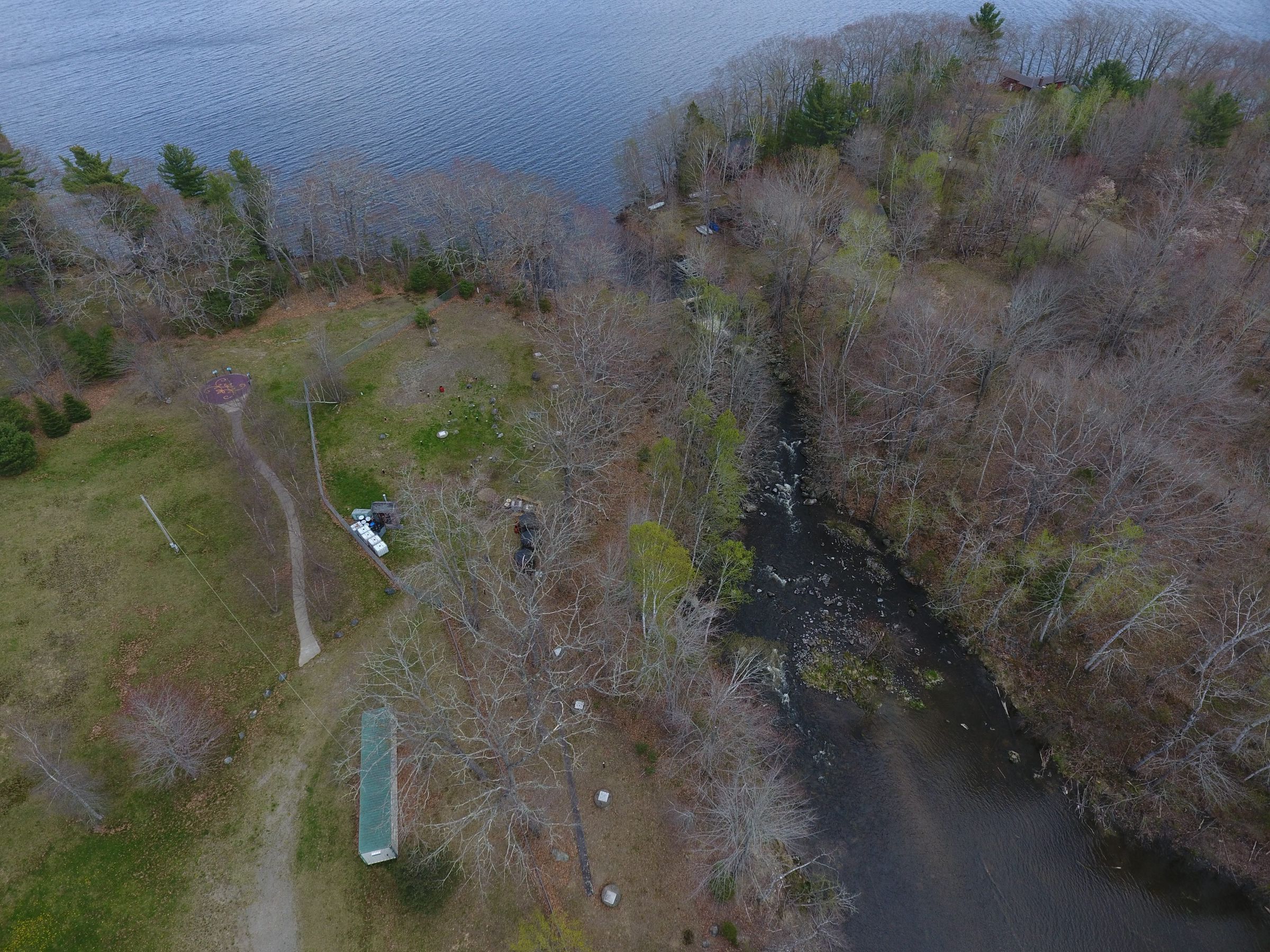Name/Title
Eastern Surplus Superfund Site on the Dennys River, Meddybemps, MaineDescription
Test wells and other equipment line the bank of the Dennys River at its source on Meddybemps Lake as part of the continued monitoring of ground water contamination by the Environmental Protection Agency. The land itself was the location of an ancestral Wabanaki Village established 9000 years ago, and occupied until around the time of the American Revolution. In 2021 it was returned to the Passamaquoddy Tribe by the State of Maine. Photographs courtesy of Donald Soctomah, the Tribal Preservation Office, and Jeffrey Orchard.Context
N'tolonapemk, located at the head of the Dennys River on Meddybemps Lake, has a long Native American history, and an interesting Euroamerican history including 250 years of industry, commerce, farming, and settlement. Unfortunately, the most recent history of the site was its use by the Eastern Surplus Company, a salvage yard specializing in military surplus. In its fifty years of operation from the 1940's to the 1990's, hazardous and highly toxic waste stored there caused the site to be seriously contaminated. The problem was so extreme that in 1996 the site was declared a Superfund Site, and a federally funded cleanup effort was undertaken by the United States Environmental Protection Agency - an effort that is ongoing today. The clean-up involved the removal of contaminated soil, drilling wells, constructing buildings and other ground disturbing activities that jeopardized the archeological evidence preserved beneath the salvage yard. a law protecting cultural resources called the National Historic Preservation Act (1966) required that the unavoidable adverse effects of the cleanup operation would be mitigated though archeological investigations of a non-hazardous portion of the site. The University of Maine at Farmington Archeology Research Center, in collaboration with the Passamaquoddy Tribe, conducted data recovery excavations at the site in 2000 and 2001. Over 200 square meters were excavated, one of the largest archeological excavation to be conducted in Maine to date.
From "N'tolonapemk: An Ancient Native American village on Meddybemps Lake, Maine", published by the University of Maine at Farmington and the Passamaquoddy Tribe.Collection
Contemporary Photographs of the Dennys River Area, Photos for Map




